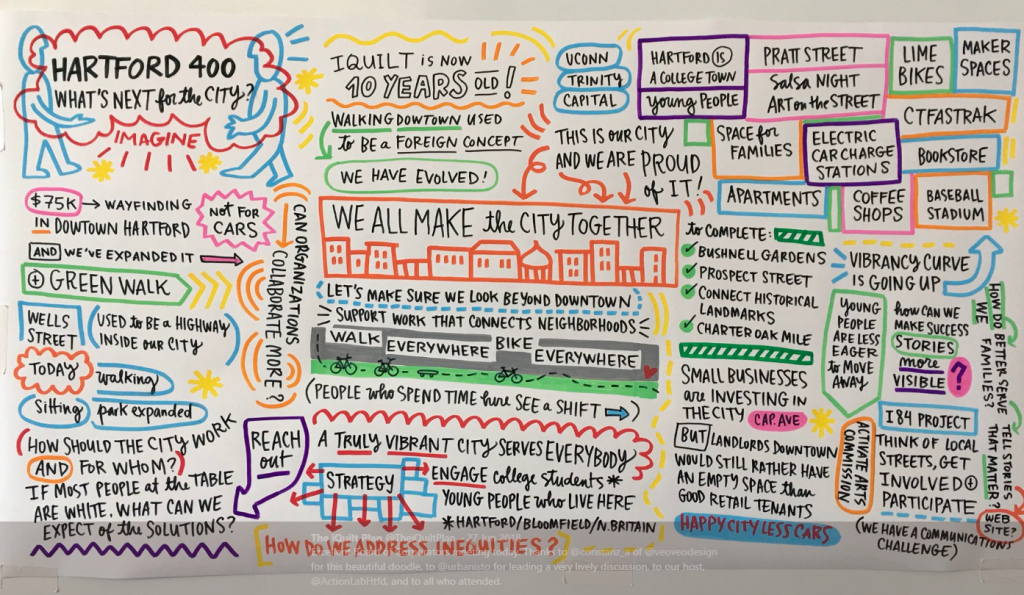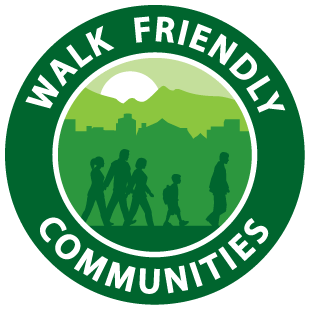
Walk Friendly Communities are supported by ambitious and comprehensive plans that tie together their activities to improve their streets. One example of an innovative plan is Hartford, CT’s iQuilt plan, which focuses on the connection between walkability and livability. The iQuilt plan aims to enrich the city through creation of a vibrant, appealing pedestrian network that weaves together the city’s cultural assets. Federal grants have helped the city achieve major objectives in this plan, and implementation of many building blocks of the plan is proceeding in Hartford.
Through the iQuilt plan, Hartford hopes to improve social cohesion, public safety, economic prosperity, and reduce greenhouse gas emissions. Building on Hartford’s existing arts economy, the city is leveraging the association between good urban form and thriving social interaction to spur creativity, growth, and vibrancy. The nine components of the plan focus on improving the street experience for those on foot while at the same time realizing the increased benefits of combining better streets with places people want to go.
Macro-scale tenets of walkability are the starting point of the plan: right-sized and traffic-calmed streets, compact urban form, and connected pedestrian networks are front and center. In addition, the iQuilt plan underscores the importance of micro-scale details; streetscape, green infrastructure, and increased cultural interactions on the streets are all equally as vital. Space to engage in outdoor physical activity such as bicycling and running is also supported in the plan. Integrating these components with improved transit and better parking policies are expected to further encourage walking downtown. Downtown bus loops have already been modified to accommodate the introduction of Bus Rapid Transit, and bus stops have been updated with amenities such as shelters, seating, and improved schedule information.
Community identity is a major theme in the iQuilt plan, and a clear sense of the network and what it encompasses is key to the plan’s formula. Cultural destinations are linked and unified through a comprehensive wayfinding system, which is already installed. An understandable and identifiable visual language will help residents and visitors orient themselves in the network. The community identity will be used for the wayfinding system, for information kiosks, and will also adorn city busses and bicycle racks.
Finally, the Green Walk portion of the plan lays out improvements to existing historic green spaces in the city and how they can be enhanced to attract and engage citizens in and around downtown. The plan includes upgrades and restoration of Bushnell Park in central Hartford, plus improvements to connected set of green spaces dubbed the Green Walk. The Green Walk provides an east–west corridor from the Connecticut River to the Capitol building and Union Station and will connect the green space along the river to the Bushnell Park. This element of the plan is well underway; Bushnell Park has been extended to Main Street via construction of park space and a pathway, roads bordering the park have been traffic calmed, and a pedestrian promenade has been constructed along the park’s edge.
The iQuilt plan combines a variety of strategies for building a more walkable city into one plan with a cohesive and achievable vision for building on the strengths of a city with a lot going for it.
